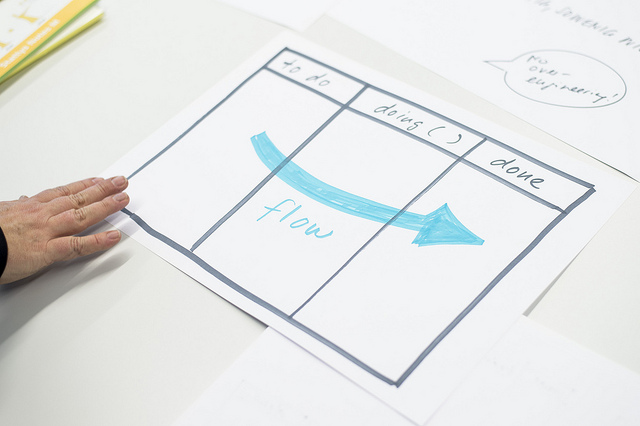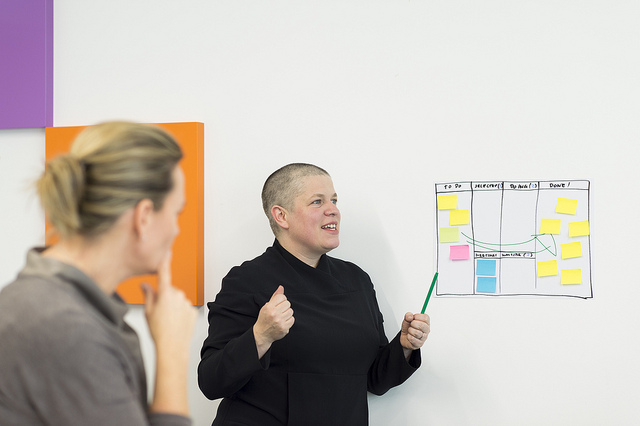The word kanban is Japanese and is composed of two parts: kan means “visual” and ban means “signal” or “board”. In many places in Japan the flow of orders and people is regulated with such small cards made of plastic or wood.
The Imperial Garden in Tokyo, for instance, can only be visited by a specific number of people at the same time. Little cards are given out to visitors until there is no card left. Then, visitors have to wait until a card is given back, freeing a slot. 
This way, a good flow of people is achieved. This idea can also be used to visualize work. If there are not to many tasks in the system, and if we can see everything that is happening at a glance, work will flow better.
This principle can be used for your own work, not matter in what area, or for team collaboration. There are a few principles in kanban that are enough to start working with it:
1. Visualize your work and your workflow
2. Keep tha task size small enough for work to flow easily through the system
3. Limit the number of task in the system (also called “limit your work in progress”)
4. Communicate with others about your kanban, discuss work regularly
5. Learn from what you observe and adapt your system so the flow gets better and better
Kanban can be learned quickly and easily, but it offers many layers of potential to develop yourself, your team and your system further. Practice the system first and when you have grasped the principles, aim higher!
Kanban can be used by children, families, teams, societies and project teams. It improves communication and work satisfaction and helps you create better results.
